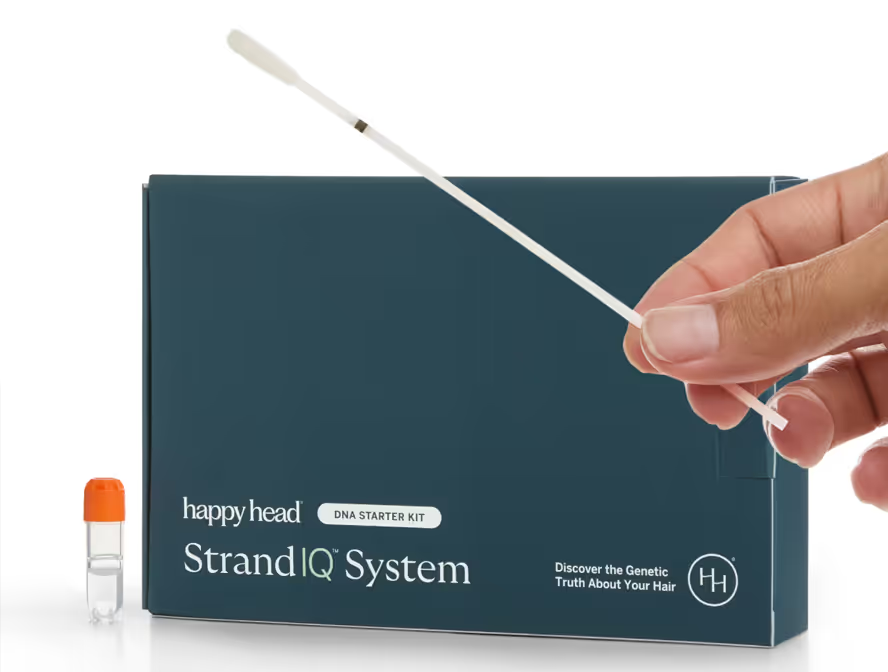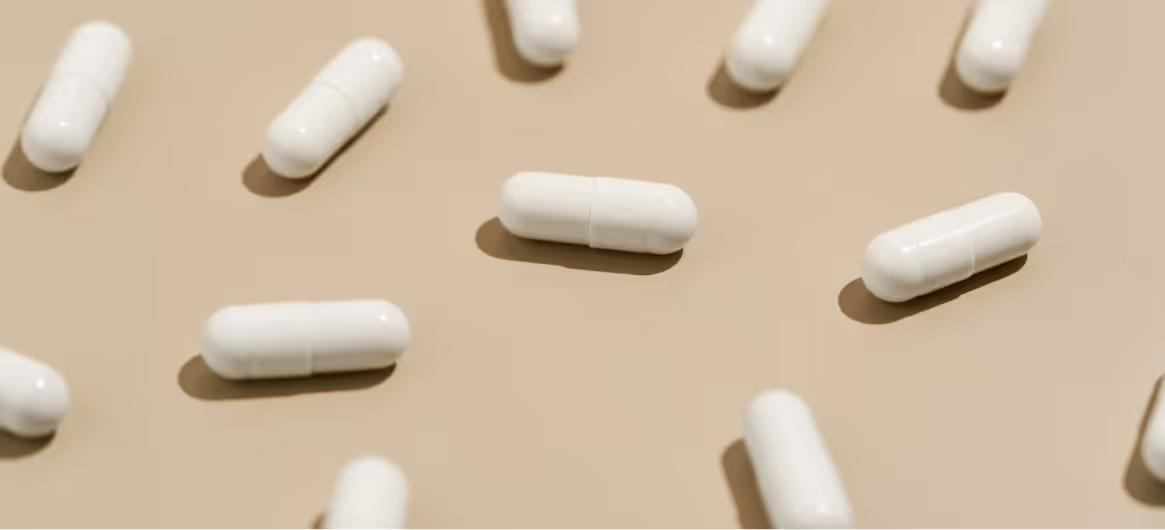Minoxidil is a widely used topical treatment for hair thinning and hair loss. It works by enhancing blood flow to the scalp, energizing hair follicles, and extending the growth (anagen) phase of hair. Yet, not all users respond equally—your genetic makeup plays a role in this variability.
Here’s how your genetic risk level influences minoxidil response and what strategic steps you can take at each stage.
Genetics and Minoxidil Response
Your body’s ability to respond to minoxidil isn’t just about application—it’s influenced by specific genetic factors. The key lies in how your scalp converts minoxidil into its active form, minoxidil sulfate. This conversion depends on an enzyme called sulfotransferase, produced in the hair follicles.
Genetic variations in the SULT1A1 gene can affect how much of this enzyme you make and how efficiently it works. People with higher sulfotransferase activity tend to see faster, more noticeable results from minoxidil, while those with lower activity may experience slower or minimal improvements.
In addition, certain genetic markers tied to blood vessel function, inflammation control, and follicle cycle regulation can also influence how well minoxidil stimulates hair growth. Understanding your genetic profile in these areas can help you and your clinician decide whether to focus on minoxidil alone, boost its effects with other treatments, or pivot to alternative solutions sooner.
Understanding Your Likelihood Levels
Your likelihood level reflects how your genetic makeup and other biological factors may influence your response to minoxidil. This framework can help set realistic expectations, guide treatment planning, and prevent wasted time on approaches that may not be the best fit for you.
High Likelihood of Effectiveness
If your StrandIQ report indicates a high likelihood of responding well to minoxidil, this treatment can be a reliable cornerstone of your hair-care routine.
- Maximize consistency
Apply minoxidil precisely as directed—typically twice daily—to achieve the best results. - Combine with lifestyle support
Ensure a supportive foundation for hair health through a nutrient-rich diet (rich in protein, iron, and biotin), quality sleep, and regular stress management. - Enhance scalp absorption
Gently massage the product in with your fingertips or a dermaroller to boost circulation and penetration. - Monitor progress
Take progress photos every 8–12 weeks and continue treatment consistently to maintain gains. - Consult for optimization
If you hit a plateau, a dermatologist might suggest adding complementary treatments like low-level laser therapy or botanicals.
Moderate Likelihood of Minoxidil Effectiveness
If your StrandIQ report suggests a moderate response to minoxidil, you might see some benefit but may need to elevate your strategy for stronger results.
- Manage your expectations
Start with minoxidil but set realistic expectations—it may offer gradual improvements. - Add herbal or booster support
Consult your doctor about using products such as tretinoin or retinoic acid, and consider serums containing saw palmetto, caffeine, or niacin to help support circulation. - Maintain a balanced routine
Pay attention to nutrition, sleep, scalp health, and reducing inflammation.
Track closely
Use scalp photos and journal notes to evaluate effectiveness over several months. - Be prepared to layer treatments
Consider combining minoxidil with other options to enhance results under Happy Head guidance.
Low Likelihood of Effectiveness
If your StrandIQ report shows a low probability of minoxidil working effectively, you’ll want to explore “minoxidil-plus” strategies or alternate options from the start.
- View minoxidil as one tool, not the only one
Try it for a trial period, but don’t rely on it solely. - Seek alternatives or supplemental treatments
Options like dutasteride or finasteride, PRP therapy, or topical solutions such as latanoprost may be more effective. - Focus on scalp health holistically
Maintain excellent scalp hygiene, nutrition, and stress management to support slower but potentially sustainable growth patterns. - Stay under professional care
Working with a Happy Head dermatologist can help you pivot to more effective treatments sooner based on progress and side effects.
Next Steps for Hair Regrowth
Minoxidil can be a helpful treatment for hair thinning, but its effectiveness varies based on individual genetics. By tailoring your approach—whether doubling down with boosters or shifting to alternative therapies—you can make informed choices that align with your body’s unique biology.
References
StrandIQ SNP Marker Count: 3
StrandIQ Genes for Trait:
SULT1A1
References:
Chitalia, J., et al. (2018). Characterization of follicular minoxidil sulfotransferase activity in a cohort of pattern hair loss patients from the Indian Subcontinent. Dermatology and Therapy, 31(6), e12688. PMID: 30295395.
Dhurat, R., et al. (2022). SULT1A1 (Minoxidil Sulfotransferase) enzyme booster significantly improves response to topical minoxidil for hair regrowth. Journal of Cosmetic Dermatology, 21(1), 343–346. PMID: 34133836.
Goren, A., Castano, J.A., McCoy, J., Bermudez, F., Lotti, T. (2014). Novel enzymatic assay predicts minoxidil response in the treatment of androgenetic alopecia. Dermatology and Therapy, 27(3), 171–173. PMID: 24283387.
King, R.S., Ghosh, A.A., Wu, J. (2006). Inhibition of human phenol and estrogen sulfotransferase by certain non-steroidal anti-inflammatory agents. Current Drug Metabolism, 7(7), 745–753. PMID: 17073578.
Mehta, N., et al. (2024). Minoxidil sulfotransferase enzymatical activity in plants: A novel paradigm in increasing minoxidil response in androgenetic alopecia. Journal of Cosmetic Dermatology, 23(1), 339–343. PMID: 37638619.
Messenger, A.G., Rundegren, J. (2004). Minoxidil: mechanisms of action on hair growth. British Journal of Dermatology, 150(2), 186–194. PMID: 14996087.
Ramos, P.M., et al. (2021). Minoxidil sulfotransferase enzyme (SULT1A1) genetic variants predicts response to oral minoxidil treatment for female pattern hair loss. Journal of the European Academy of Dermatology and Venereology, 35(1), e24–e26. PMID: 32567076.
Sharma, A., et al. (2019). Tretinoin enhances minoxidil response in androgenetic alopecia patients by upregulating follicular sulfotransferase enzymes. Dermatology and Therapy, 32(3), e12915. PMID: 30974011.
Suchonwanit, P., Thammarucha, S., Leerunyakul, K. (2019). Minoxidil and its use in hair disorders: a review. Drug Design, Development and Therapy, 13, 2777–2786. PMID: 31496654.
Yan, A., et al. (2023). Co-delivery of minoxidil and tocopherol acetate ethosomes to reshape the hair follicular microenvironment and promote hair regeneration in androgenetic alopecia. International Journal of Pharmaceutics, 646, 123498. PMID: 37820942.
Yu, X., et al. (2010). Functional genetic variants in the 3'-untranslated region of sulfotransferase isoform 1A1 (SULT1A1) and their effect on enzymatic activity. Toxicological Sciences, 118(2), 391–403. PMID: 20881232.
This content, including StrandIQ™ DNA analysis reports and any Happy Head products and/or services referenced therein, is for informational and cosmetic purposes only. It is not intended to diagnose, treat, cure, or prevent any disease. This content does not constitute medical advice and should not be used to make healthcare decisions. References to prescription treatments are educational in nature. Always consult a licensed healthcare professional for any medical concerns or treatment decisions.



.avif)




.avif)

